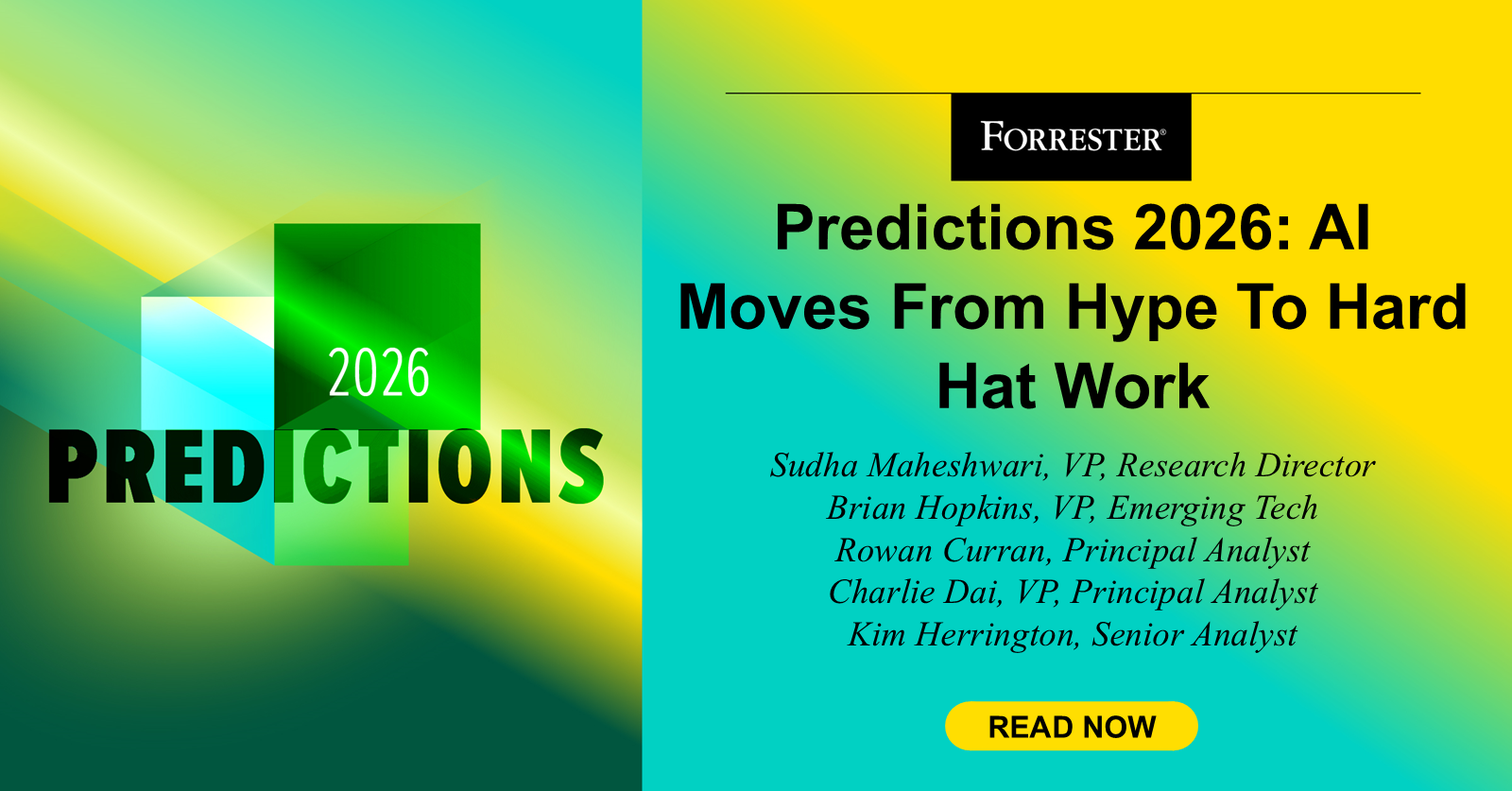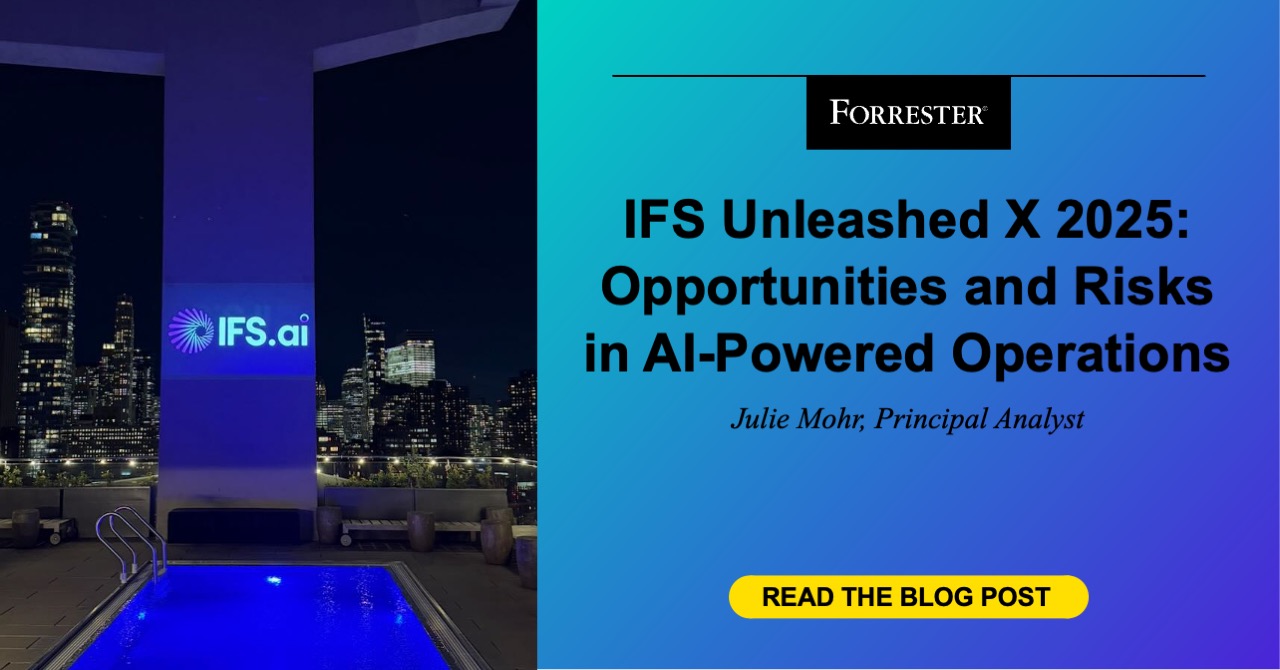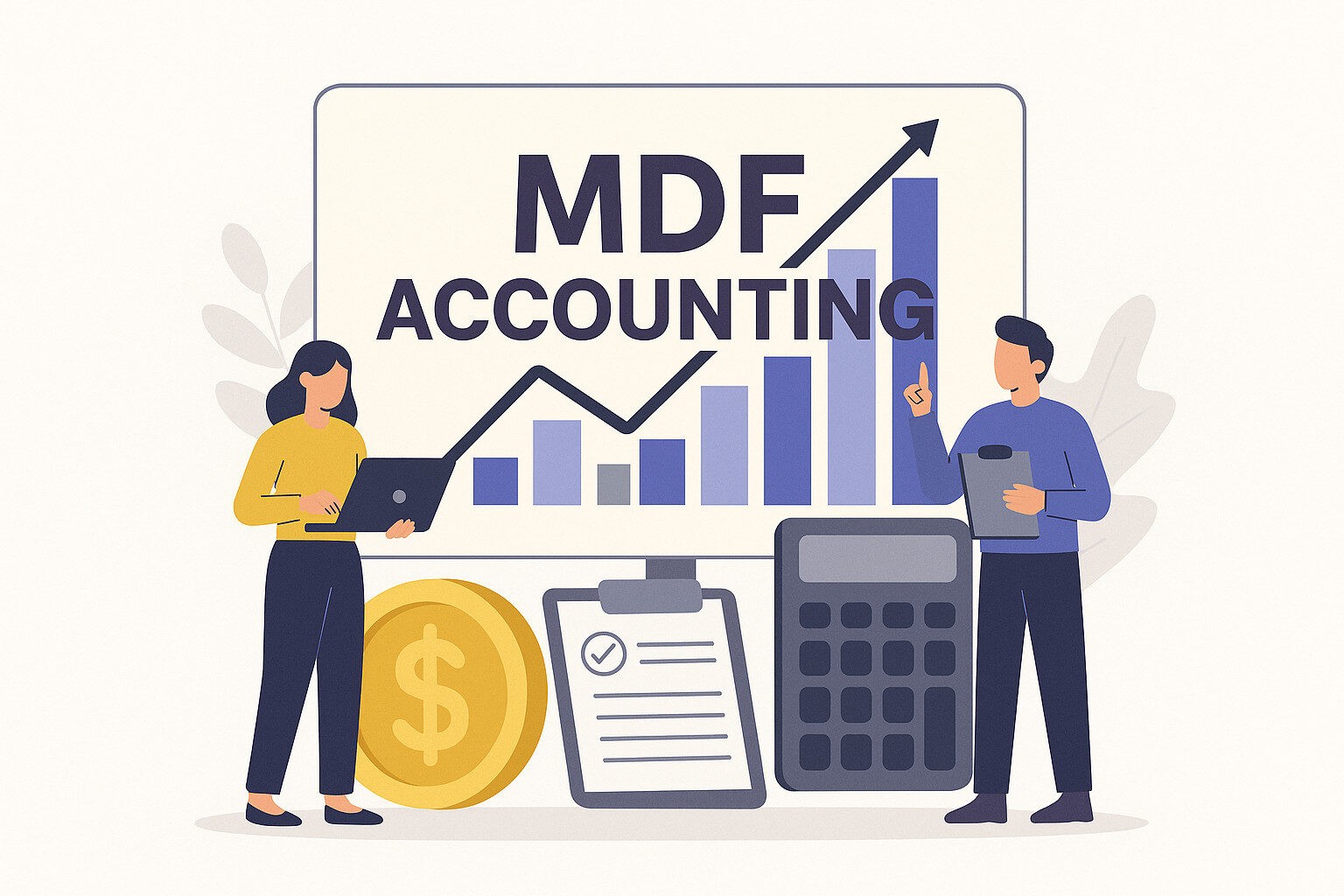Every bubble inevitably bursts, and in 2026, AI will inevitably lose its sheen, trading its tiara for a hard hat. Enterprise ROI concerns will exceed the tensile strength of vendor hyperbole. In the face of this market correction, enterprises will prioritize function over flair. CFOs will get pulled into more AI deals. Companies will distribute their bets across agentic ecosystems and shift talent around as AI agents take over grunt work. Savvy enterprises will invest in AI governance and AI fluency training to mitigate risk and slowly chart their AI voyage. In 2026, as the art of the possible succumbs to the science of the practical, we predict:
Enterprises will delay 25% of AI spend into 2027. AI value is failing to land: Only 15% of AI decision-makers reported an EBITDA lift for their organization in the past 12 months, and fewer than one-third can tie the value of AI to P&L changes. Given the high payback expectations from AI investments now, we believe that CEOs will pull more CFOs into AI decisions, leading enterprises to delay 25% of their planned spend into 2027. The disconnect between the inflated promises of AI vendors and the value created for enterprises will force market correction. Savvy buyers should capitalize on this supply side frailty by manipulating the levers of AI cost while refocusing investment on top- and bottom-line impact.
Vendor fragmentation will force a majority of enterprises to compose “agentlakes.” Hyperscalers and data platform and automation vendors can’t claim agentic AI dominance just yet. Vendor fragmentation will cause a majority of enterprises to build composable agent architectures. These agentlakes will manage and orchestrate fractured AI agent deployments and enable complex multiagent use cases. Rapid advances in agentic coding tools that integrate fully into infrastructure and deployment tools are proliferating at an extreme rate. The underlying data supporting context engineering for agents will drive the need to compose real-time support for multimodal, multisource data, capabilities not easily found in one platform. Be ready to enable automation streams to flow into the agentlakes through composable and interoperable agents.
To lift AI adoption and reduce risk, 30% of large enterprises will mandate AI training. Poor AI literacy continues to erode trust in AI and leads to poor adoption. Our data shows that 21% of AI decision-makers cite employee experience and readiness as a barrier to AI adoption. Both AI adoption and risk management through responsible AI training are intrinsic to AI maturity. That’s why enterprisewide AI literacy not only improves the organization’s artificial intelligence quotient (AIQ) but also protects the company from liability, particularly in regulated industries. Consider partnering with an AI service provider or your existing technology providers to offer formalized training and set clear measures of success to gauge AI knowledge and use.
Forrester clients can read our full Predictions 2026: Artificial Intelligence report to get more detail about each of these predictions, plus two more bonus predictions on the impact of agentic data and analytics on data teams and the need for a dedicated role focused on AI governance. Set up a Forrester guidance session to discuss these predictions with me and other key contributors of this report to plan out your 2026 AI strategy that will set your organization up for success.
If you aren’t yet a client, sign up here to find out when you can download our complimentary Predictions guides and additional complimentary resources, including webinars, on the Predictions 2026 hub.


























